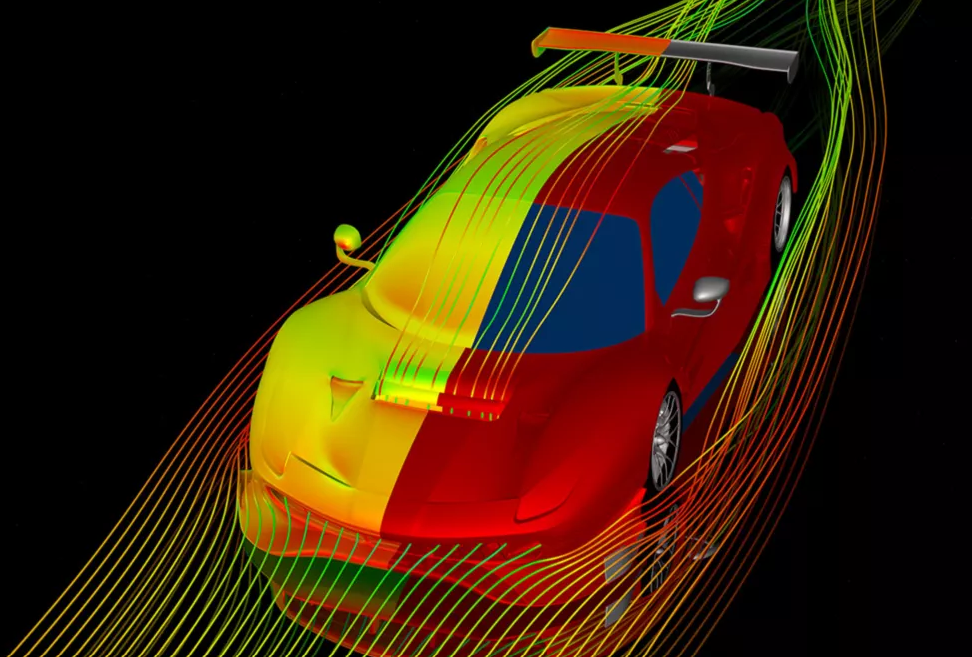Reversing Climate Change with the Power of Simulation
Climate change is one of the greatest challenges of our time, requiring urgent action to mitigate its impacts and reverse its effects. Ansys simulation software offers innovative tools that can play a crucial role in this global effort. By empowering engineers and researchers with advanced simulation capabilities, Ansys enables the development of sustainable technologies, optimization of energy systems, data-informed decision-making, and more.
Advancing Sustainable Transportation
The automotive industry is a significant contributor to greenhouse gas emissions. By aiding in the design and optimization of electric vehicles (EVs), Ansys simulation software can help support sustainable transportation development.
Engineering simulations help designers optimize EV components such as batteries, motors, and power electronics. Ansys Fluent, Motor-CAD, Maxwell, Icepak, HFSS, SIWave, and optiSLang are all essential tools for simulation of EV systems and components.
What applications does this software provide?
- Ansys Fluent has powerful capabilities in aerodynamics and battery thermal management.
- Motor-CAD enables engineers to quickly evaluate motors across the full torque-speed operating range to optimize their performance, efficiency, and size.
- Ansys Maxwell is a low frequency electromagnetic field solver and is essential for simulation of power electronics including inverters, battery chargers and DC-DC converters.
- Icepak provides robust electronics thermal management simulation for under-hood, enclosures, and forced convection cooling applications.
- Ansys HFSS and SIwave are high frequency electromagnetic field solvers for component, board and system level simulation of EMI/EMC, signal integrity and power integrity. Need to learn more about EMI/EMC? Get your eBook today.
- Ansys optiSlang is a powerful parametric optimization tool that directly couples with all Ansys solvers and allows engineers to understand the design space and optimize for robust performance.
By accurately modeling, simulating, and analyzing the behavior and efficiency of various components and systems such as batteries, motors, and power electronics, engineers can improve their performance, extend range, and accelerate the adoption of electric transportation, thereby reducing greenhouse gas emissions. Ansys simulation software also enables engineers to significantly increase the efficiency and performance of proven propulsion technologies such as gasoline and diesel fueled internal combustion engines while EV technologies become more viable.

Accelerating Renewable Energy Deployment
Transitioning to renewable energy sources is paramount to combating climate change. Ansys simulation software can support this transition by aiding in the development, optimization, and integration of renewable energy technologies.
For example, with wind energy, Ansys simulations enable engineers to analyze wind turbine performance, assess the impact of various design factors, and optimize the placement of turbines within wind farms. These simulations result in more efficient wind energy conversion and increased power output, furthering the deployment of clean and sustainable energy.
Similarly, Ansys software can also aid in the design and optimization of solar photovoltaic (PV) systems. Through simulations, engineers can assess factors such as solar panel orientation, tilt, and shading, maximizing energy production and improving the overall efficiency of solar installations.
Simulation software including Ansys Maxwell, Mechanical, Fluent, CFX, Twin Builder, and optiSLang empowers engineers to create optimal designs in renewable energy systems such as wind turbines, solar panels, and hydroelectric generators. By accurately modeling and analyzing these systems, engineers can enhance their efficiency, reliability, and overall performance, thereby accelerating the transition to clean energy sources.
Enhancing Energy Efficiency
Energy efficiency is a vital aspect of reducing greenhouse gas emissions across various sectors. Ansys simulation software aids in this endeavor by providing accurate insights into energy consumption and identifying areas for improvement. By simulating the performance of complex systems and components, engineers can optimize designs to achieve higher efficiency levels.
In the automotive industry, for example, Ansys software enables the analysis of powertrain systems, aerodynamics, and vehicle structures. This allows for the development of lightweight materials, streamlined designs, and advanced propulsion systems, ultimately leading to more fuel-efficient vehicles and reduced emissions.
In manufacturing, simulation can aid in optimizing production processes by evaluating energy consumption, identifying bottlenecks, and suggesting improvements. This can help industries minimize waste, reduce energy consumption, and thus, lower greenhouse gas emissions.
Designing Sustainable Infrastructure
The construction industry is a significant contributor to greenhouse gas emissions, making sustainable infrastructure design crucial. Ansys simulation software enables engineers to assess the environmental impact of various design options before construction even begins. By simulating airflow, heat transfer, and structural behavior, it becomes possible to optimize building designs for energy efficiency and sustainability.
For instance, Ansys simulations can aid in evaluating HVAC system performance, lighting arrangements, and insulation materials, ensuring energy-efficient buildings. By reducing energy consumption during the operational phase, these structures contribute to lower greenhouse gas emissions.
Ansys products including Ansys Additive Suite, Forming, Granta, Fluent, CFX, Mechanical, LS-Dyna, Twin Builder, and optiSLang support the development of sustainable materials and manufacturing processes. By analyzing the behavior of materials, optimizing designs, and simulating manufacturing techniques, engineers can reduce material waste, improve resource efficiency, and promote the use of eco-friendly materials.
Advancing Sustainable Manufacturing
Ansys simulation software can also play an important role in advancing sustainable manufacturing practices. By simulating manufacturing processes, engineers can identify opportunities to reduce energy consumption, minimize waste, and optimize resource utilization.
For instance, Ansys tools aid in simulating additive manufacturing processes like 3D printing. By optimizing parameters such as material usage, printing speed, and geometry, engineers can achieve more efficient production, resulting in reduced waste and lower emissions.
Additionally, Ansys simulation software may assist in the development of sustainable materials. By simulating the properties and performance of alternative materials, engineers can create lighter, stronger, and more eco-friendly alternatives. These materials can be used in various industries, including aerospace, automotive, and packaging, contributing to significant reductions in greenhouse gas emissions.
Addressing climate change and reducing greenhouse gas emissions are critical endeavors, and Ansys simulation software proves to be a valuable tool in achieving them. By enhancing energy efficiency, enabling sustainable infrastructure design, and advancing sustainable manufacturing practices, Ansys empowers engineers to make informed decisions that contribute to a greener future.
Together, by harnessing the capabilities of Ansys simulation software and collaborating on innovative solutions, we can make significant strides towards reversing the effects of climate change and creating a healthier planet for future generations.



